HomeHardwareFeaturesElden Ring
Elden Ring PC performance and settings guide: Shadow of the Erdtree editionFully updated for the grim new expansion
Fully updated for the grim new expansion
Image credit:Rock Paper Shotgun/Bandai Namco
Image credit:Rock Paper Shotgun/Bandai Namco
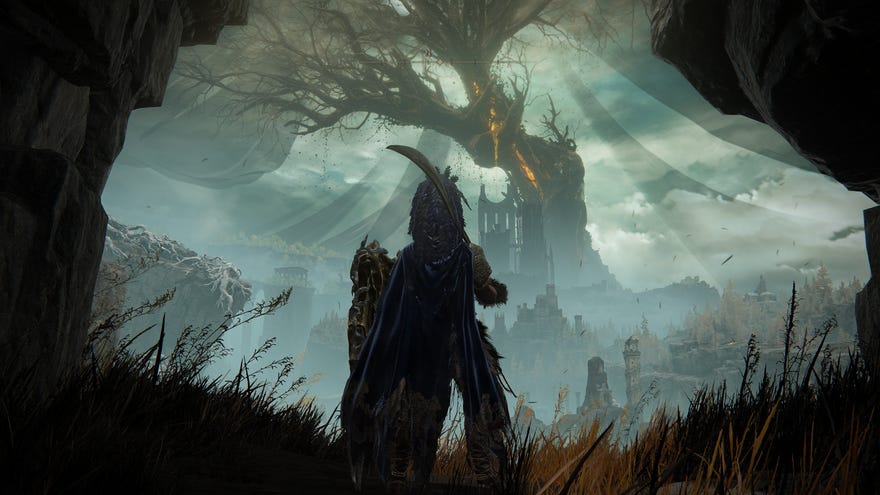
Under normal circumstances, I wouldn’t completely redo a game’s PC performance guide just because it has a new DLC out. But this isElden Ring, andShadow Of The Erdtree, and you all love those things. Don’t act like you don’t! I’ve seen thenumbers.
Besides, it’s been over two years since my first poke around Elden Ring’s settings menu, and much has changed since then. Both in the wider realm of hardware (newgraphics cards, theSteam Deckand subsequent rise of handheld PCs) and the game itself, be it performance-smoothing patches or thequiet addition of ray tracing. Even if Shadow of the Erdtree doesn’t run much differently the current state of the base game, it still presents a perfect opportunity for a technical check-up.
Elden Ring’s Open World Is Impossibly Rich | My Fav Thing In… (Elden Ring Review)Watch on YouTube
Elden Ring’s Open World Is Impossibly Rich | My Fav Thing In… (Elden Ring Review)

Thus, using a particularly framerate-hungry patch of SOTE’s opening region as a testing ground, I’ve re-benchmarked with an assortment of new and old hardware alike – and rejigged the best settings guide you’ll find down below. I sincerely hope you find it useful, as I literally died for it. Many times! In increasingly horrible ways.
Image credit:Rock Paper Shotgun/Bandai Namco
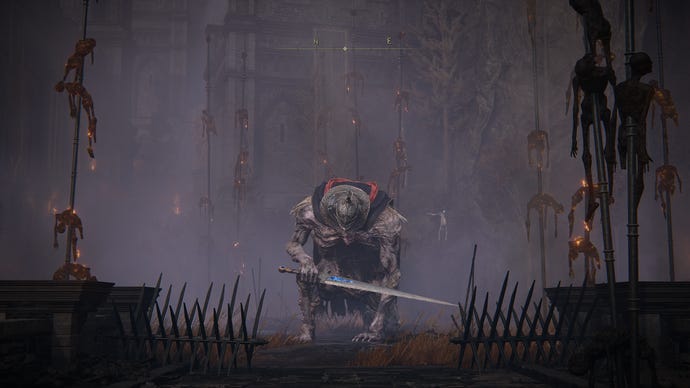
Elden Ring: Shadow of the Erdtree system requirements and PC performance
Beyond the expected swelling of the storage footprint, Shadow of the Erdtreedoesn’t raise the original system requirementsat all. If you’ve already been Elden Lording around on your PC, all you’ll need to do is make sure there’s a modest amount of room going spare on yourSSDor hard drive: the expansion takes up 15.06GB once fully installed. Everything else is as it was in 2022, including the weird 12GB RAM minimum.
Elden Ring minimum PC specs
Elden Ring recommended PC specs
While my chosen benchmarking spot – a Messmer solider camp – will strain your PC harder than on the open plains of Limgrave, I can report that Shadow of the Erdtree doesn’t up the sluggishness as a matter of course. Anything that runs Elden Ring will therefore run the DLC: for example, my 6GB GTX 1060, only modestly above the min-spec Nvidia GPU, was able to average 45fps at 1080p on Maximum quality. That only rose to 51fps on High and 56fps on both Medium and Low, but still, not bad showings for a card of this stature. The Recommended-spec GTX 1070 also put in a 55fps shift at Maximum/1080p, and only dropped to 48fps at 1440p.
Newer entry-level graphics cards are viable too. Intel’s Arc A750, released several months after Elden Ring, handled Erdtree on Maximum/1080p at an average of 51fps. The top preset is less appealing on theRTX 4050, the laptop-exclusive GPU that powers my MSI Thin GF63, where it just about averaged 40fps – though that’s still playable, and less intensive areas (like interior castles and dungeons) allowed for visibly smoother performance.
It’s not unheard of for big expansions to push your hardware harder than the base game;Horizon Forbidden West’s Burning Shores is a recent culprit, andCyberpunk 2077: Phantom Liberty actually did raise the original system requirements. You needn’t worry with Shadow of the Erdtree, though. Again, if your PC can run Elden Ring, it can run this, evidently including rigs based on aged or low-end gear.
Image credit:Rock Paper Shotgun/Bandai Namco
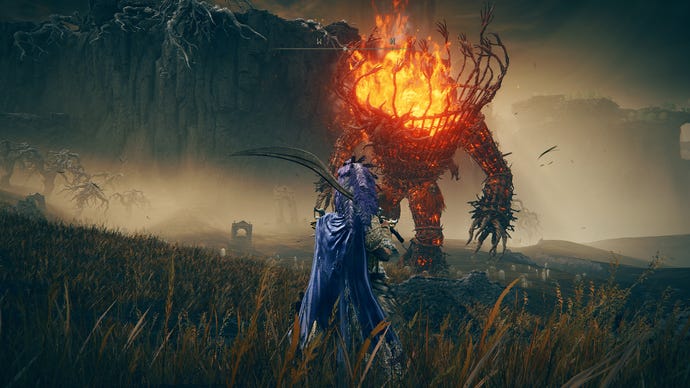
Unfortunately, while Shadow of the Erdtree maintains the upsides of Elden Ring’s PC performance, it also leaves itstechnical shortcomingsequally untouched. Despite previous patches, it still stutters regularly on everythingexcept the Steam Deck, which got its apparentlySteamOS-specific fixes in all the way back in 2022; attempts to smooth out this hitching on Windows have been made, but without the same degree of success, even two years on.
The expansion also does nothing to tidy the more frayed edges of Elden Ring’s PC port. Keyboard support is still a joke, with Xbox controller icons all over the menus even when there isn’t one plugged in, and you still can’t raise the 60fps cap without mods. Likewise, proper ultrawide resolution support can only be enabled through themodding route, which involves turning off Easy Anti-Cheat and rendering online play impossible. I’m sure some of these are easier to implement than others, and if you’ve spent two years roaming the Lands Between you’ve probably made your peace with the framerate cap anyway, but it does feel like a missed opportunity for SOTE not to throw in some more PC improvements. Especially now that Elden Ring supports ray tracing –DLSSorFSRwould have made ideal bedfellows, but these too are nowhere to be seen.
Funnily enough, every single premium or upper-mid range GPU I tried thereafter landed in the same fifties range. The RTX 3070, running maximum at 1440p? 55fps. TheRTX 4070 Tiat 1440p? 56fps. At 4K?Also56fps. If that isn’t artificial bottlenecking, I don’t know what is. The latter card did drop to 46fps at 4K once I added Maximum-quality ray tracing, but then that was only 5fps behind the much more powerful (and expensive)RTX 4090on the same settings.
Basically, both Elden Ring and Shadow of the Erdtree plonk you in a kind of tolerable-but-not-impressive performance limbo, where you probably don’t need to worry about chugging (outside the occasional stutter) but you also can’t truly reap the benefits of an upgraded PC. The only piece of kit I’ve seen that can’t at least have a crack at the Maximum preset is the Steam Deck, though even this can stay above 30fps with a combination of Maximum, High, and Medium settings.
Speaking of…
Image credit:Rock Paper Shotgun/Bandai Namco
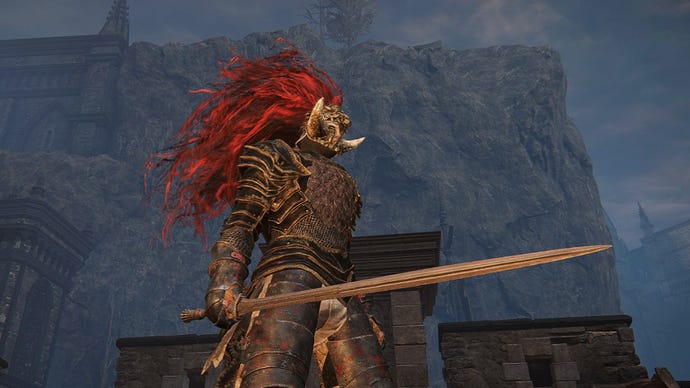
Elden Ring: Shadow of the Erdtree best settings
(While still staying away from Low as possible, that is. You can see in the comparison screenshots below that even without motion, Medium and above immediately look better.)
1of4CaptionAttribution
1of4CaptionAttribution
1of4
1of4
1of4
CaptionAttribution




CaptionAttribution
Caption
Attribution
Ray tracing quality:In fairness, Elden Ring’s RT lights and shadows aren’t the mostdemanding examples of the form, their Maximum quality setting cutting performance to 40fps and Low to 48fps. At the same time, they only barely improve on the non-RT effects, so I’m not convinced their worth even that modest cost.
1of3CaptionAttribution
1of3CaptionAttribution
1of3
1of3
1of3
CaptionAttribution



CaptionAttribution
Caption
Attribution
Texture quality:Dropping from Maximum to Medium textures produced 55fps, a 2fps improvement. Don’t bother going below that, as Low resulted in 55fps as well.
Antialiasing quality:Leave this on High. Although Low nudged the RTX 4060 up to 55fps, it looks noticeably more fuzzy.
SSAO:Whereas lowering this boosted performance in 2022, here it didn’t have any positive effect at all. On current evidence, then, you may as well leave this on Maximum.
Motion blur:This doesn’t affect performance either way, though also doesn’t add much. I say disable it.
Shadow quality:Try to leave this on Maximum, and absolutely no lower than High. Another unaddressed issue from Elden Ring’s early days is the horrendous shadow flickering you get on lower settings, so even if these are a tiny bit faster, it’s better to just keep the quality turned up.
Lighting quality:This, on the other hand, can be safely lowered. Perhaps to Medium, which squeezed an extra 2fps out of the RTX 4060.
Effects quality:Again, going to Medium here grants a small (2fps in my case) performance bump with minimal visual loss.
Volumetric quality:Probably worth keeping on High, as Medium was only 1fps faster in my tests.
Reflection quality:There was no performance at all between Maximum and Low here, so feel free to go with the former.
Water surface quality:No difference between High and Low here either.
Global illumination quality:Another 55fps result here, from switching High to Medium.
Grass quality:One more 55fps for the road, via dropping from Maximum to Medium.
Image credit:Rock Paper Shotgun/Bandai Namco
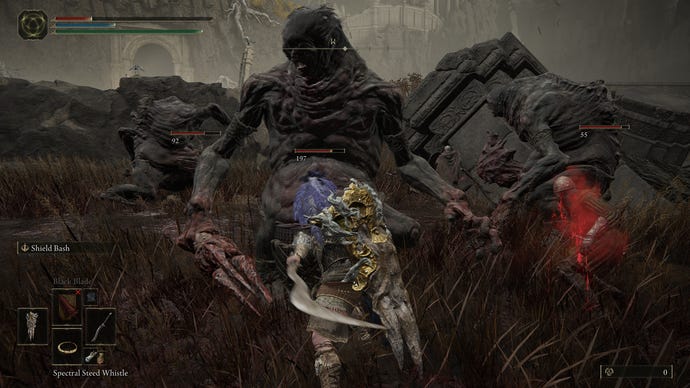
While these tests didn’t reveal any of the non-RT settings to be secret resource hogs, they did seemingly give enough to work with – small gains can and usually do add up. However, when I tried a combination that changed textures, lighting, effects, global illumination, and grass down to Medium, all I got on the RTX 4060 was another 55fps average. The same as with just one of those lowered from Maximum. What in the name of Godric’s eighth arm was this?
In hindsight, I maaaaaybe should have picked a worse testing GPU; the RTX 4060 was reliably hitting the 60fps cap at various points in my benchmark run, effectively putting a ceiling on how much it could improve with settings changes. But then again, it was neverconsistentlyat 60fps, and you’d think that raising the lower end of the performance range would increase averages as well. Instead, it just looks as if Elden Ring, in its current state, provides diminishing returns on newer/faster/better GPUs from lowered settings. Part of this is just the framerate cap, but also… well, let’s just say that if Elden Ring wants to take a framerate dip, it’s going to take a framerate dip, regardless of how much time you devote to spannering its settings.
It’s not all bad news, though. After swapping the original GTX 1060 back in, I used those RTX 4060 results to see if I could get bigger improvements on the much older card. And I did, with these:
As of Shadow of the Erdree, these are what I’d call Elden Ring’s best settings, as they bumped the geriatric GTX 1060 up from 45fps at Maximum/1080p to a noticeably smoother 55fps. That’s just 1fps shy of its Low preset result, and without a single Low-level setting. Except maybe motion blur, but hey, motion blur sucks.
To be clear, mind, these are specifically the best settings for lower-end PCs. My advice to anyone with bigger, badder hardware is to just slap on Maximum and lower either lighting or effects quality to Medium. This will still give you a modest boost over the preset as-is, and you won’t be cutting quality on anything else when it likely won’t help to do so.